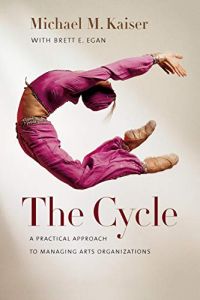Join getAbstract to access the summary!

Join getAbstract to access the summary!
Michael M. Kaiser and Brett E. Egan
The Cycle
A Practical Approach to Managing Arts Organizations
Brandeis University Press , 2013
What's inside?
Sports teams know how to make money and keep their fans happy. Arts organizations can do the same.
Recommendation
Athletic organizations understand that success depends upon presenting quality sporting events, top-notch players and exciting schedules that generate publicity, ticket sales and commercial sponsors. Former John F. Kennedy Center president Michael M. Kaiser presents the third volume of his arts organization management trilogy, this one written with arts consultant Brett E. Egan. The manual explores how large and small arts organizations can utilize the same “cycle” sports teams follow. Arts organizations can achieve comparable success by programming “surprising content,” building a “family of supporters,” and balancing revenue and expenses. As Kaiser and Egan note, the cycle’s elements interconnect, so that coverage generates some necessary repetition. getAbstract recommends this densely informative handbook of practical strategies to managers dealing with the complexities confronting arts organizations, artists and patrons.
Summary
About the Authors
Michael M. Kaiser was president of the John F. Kennedy Center for the Performing Arts, and is now a US State Department cultural ambassador. Brett E. Egan heads the managing and consulting team from DeVos Institute of Arts Management in projects around the world.


















Comment on this summary